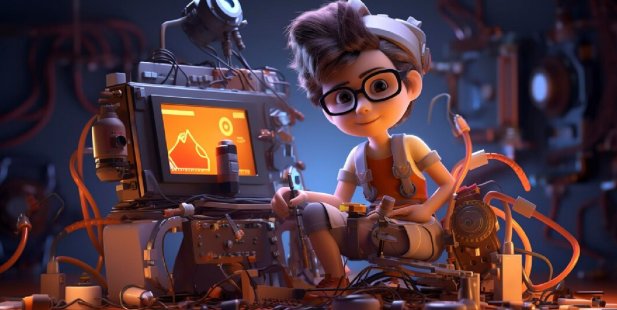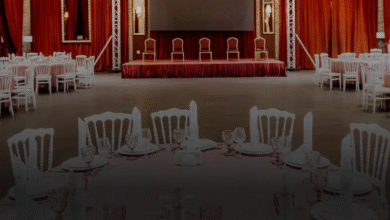From Script to Sketch: How Text to Whiteboard Animation Transforms Ideas into Visual Stories
How Text to Whiteboard Animation

In a world overflowing with digital content, standing out requires more than just a message—it takes storytelling, creativity, and visual engagement. One of the most effective methods of achieving this trifecta in 2025 is through text to whiteboard animation. Whether you’re explaining a complex process, pitching a startup, or teaching a concept, whiteboard animation turns simple text into compelling, hand-drawn visuals that captivate and convert.
In this post, we’ll explore how whiteboard animation works, walk through animation storyboard examples, and show how platforms like AnimatedVideos help bring ideas to life through this dynamic form of visual storytelling.
What is Text to Whiteboard Animation?
Text to whiteboard animation refers to the process of converting written content—like scripts, outlines, or blog posts—into animated videos that mimic the look of a hand drawing on a whiteboard. These videos often include:
-
Hand-drawn characters and objects
-
On-screen writing or sketching
-
Voice-over narration
-
Simple transitions and emphasis effects
This style has gained immense popularity in business, education, and marketing thanks to its clarity, simplicity, and ability to hold attention in a world of distractions.
Why Text to Whiteboard Animation Works So Well
✅ Cognitive Clarity
Humans process visuals 60,000 times faster than text. With whiteboard animation, you’re not just telling your audience—you’re showing them. This dual-channel processing improves comprehension and retention.
✅ Visual Engagement
Watching illustrations unfold in real time engages curiosity. It’s like watching a puzzle come together, keeping viewers hooked from start to finish.
✅ Versatility Across Industries
Whether it’s for healthcare, education, finance, or product marketing, whiteboard animations adapt well to any message. They are universally appealing and easy to follow.
The Process: From Text to Whiteboard Animation
The transformation from plain text to an engaging animation typically follows these steps:
1. Scriptwriting
Everything starts with the text. A compelling whiteboard animation begins with a concise, clear script that outlines the core message, value proposition, or teaching point.
2. Storyboarding
This is where the magic begins. Animation storyboard examples are developed to visualize how the script will unfold. A storyboard breaks down each section of the text into scenes or frames, outlining:
-
What visuals will appear
-
What text will be written
-
How the hand will move and sketch
-
Timing and transition cues
Platforms like AnimatedVideos offer professional storyboard design to ensure the animation flows smoothly and reflects the intended tone and message.
3. Illustration and Voice-Over
Illustrators bring the storyboard to life by sketching the assets that will appear on screen. Simultaneously, a voice actor records the script, ensuring a consistent tone that complements the visuals.
4. Animation and Editing
The drawings are animated using whiteboard animation software. The “hand” effect is added, syncing the illustrations with the narration and making the visuals appear as though they’re being drawn in real time.
5. Final Review and Delivery
After review and any needed revisions, the final whiteboard video is delivered, ready for publishing on websites, social media, or internal training platforms.
Animation Storyboard Examples in Action
To truly understand the impact of whiteboard animation, let’s look at a few animation storyboard examples used in various industries:
🎓 Educational Module on Climate Change
Storyboard: The script is broken into four segments—causes, effects, global response, and personal action. Each frame includes simple icons (like factories, trees, weather symbols), with transitions that build on each concept.
Outcome: Students retain more information and perform better in assessments after watching the whiteboard version than reading a textbook.
🏢 Corporate Explainer Video for a SaaS Platform
Storyboard: The problem (manual work), solution (automated platform), and benefits (efficiency, cost savings) are each represented with sketched scenarios. Characters are used to humanize the pain points.
Outcome: The video increases website conversion by 34% and reduces bounce rates.
💰 Financial Literacy Series for Young Adults
Storyboard: Each scene simplifies a concept (e.g., compound interest, budgeting, saving) into relatable metaphors—like planting money trees or managing piggy banks.
Outcome: Engagement rates triple compared to traditional e-learning videos.
Each of these animation storyboard examples shows how visual simplicity paired with a well-structured script can make complex or “dry” topics feel interesting and digestible.
How AnimatedVideos Delivers High-Impact Whiteboard Animations
As demand for high-quality animations rises, studios like AnimatedVideos have perfected the art of turning text to whiteboard animation efficiently and creatively. Here’s how they stand out:
1. Script-to-Storyboard Expertise
Their creative team collaborates with clients to craft scripts that speak directly to target audiences. They then translate those scripts into polished storyboards with professional sketches and scene directions.
2. In-House Illustrators and Voice Artists
With a roster of skilled illustrators and voice talents, AnimatedVideos ensures each animation is unique, brand-aligned, and emotionally engaging.
3. Cross-Platform Ready
AnimatedVideos provides formats optimized for YouTube, Instagram, LinkedIn, and other platforms, ensuring you get maximum reach from every animation.
4. Speed and Scalability
Need 10 videos in a week for a training program? Their workflow is built for rapid scaling without sacrificing quality.
Text to Whiteboard Animation: Best Practices
To get the most out of your whiteboard animation project, keep these tips in mind:
✏️ Keep It Short and Focused
Aim for 60 to 90 seconds per animation. Break down complex ideas into bite-sized chapters if needed.
🧠 Use Visual Metaphors
Use icons and sketches to turn abstract ideas into recognizable images—like a lightbulb for an idea, or a maze for a challenge.
🎤 Match Tone to Audience
Educational? Inspirational? B2B? The narration tone should match your audience’s expectations and energy level.
🖼️ Use Storyboards to Align Vision
Before animating, use animation storyboard examples to get everyone on the same page and reduce revisions.
Final Thoughts
The journey from text to whiteboard animation is a transformation of static words into dynamic stories. With the help of professional storyboard planning, voice-over, and animation tools, even the driest topics can come to life in an engaging, easy-to-understand format.
By studying strong animation storyboard examples and partnering with experts like AnimatedVideos, businesses, educators, and creators can unlock the full potential of whiteboard animation in 2025. It’s not just about drawing—it’s about telling stories that stick.




